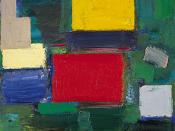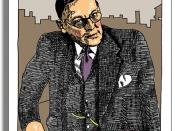As an art historical term, "modern" refers to a period dating from roughly the 1860s through the 1970s and is used to describe the style and the ideology of art produced during that era. It is this more specific use of modern that is intended when people speak of modern art. The term "modernism" is also used to refer to the art of the modern period. More specifically, "modernism" can be thought of as referring to the philosophy of modern art.
After observing the different works of literature, painting, sculpture, and architecture through chapters 20 and 21, it's paramount that the thoughts that the artists and writers used to expressed their self were less strict than every before. Self expression flourished like wild flowers. By showing people that it was acceptably to do what you wanted and not what society wanted gave the artists and writers full range when it came to developing their work.
As the 20th century progressed, the exercise of artistic freedom became fundamental to progressive modernism. Artists began to seek freedom not just from the rules of academic art, but from the demands of the public. Soon it was claimed that art should be produced not for the public's sake, but for art's sake. With this theory in mind, the concept of "Abstract Expressionism" emerged.
Abstract Expressionism has its roots in other earlier 19th century art movements such as Cubism and Surrealism that promoted abstraction rather than representation. My favorite peace of abstract art was "Guernica" by Picasso, composed during the war in 1939. The painting shows all the pain and agony caused by the war. The color scheme was very dark and depressing colors. He used the colors to show how sad and miserable he felt and the destruction the war caused. The...


